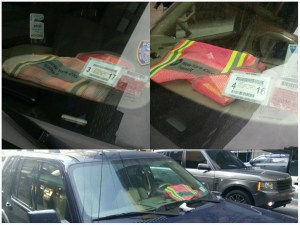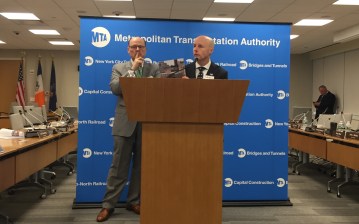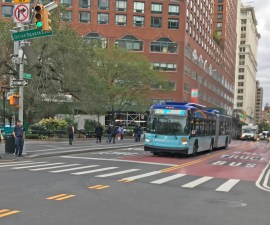Andy Byford Was A Hidden Hand in Mayor’s Winning 14th Street ‘Busway’ Plan

Andy Byford’s name was left out of Mayor de Blasio’s announcement on Wednesday of a radical experiment to improve transit on 14th Street, but the New York City Transit president could be seen as a major force behind the plan, thanks to a successful approach that he pioneered when he ran the transit system in Toronto.
The 14th Street proposal can be linked to Byford’s ongoing assault on NIMBYism here in New York and his game-changing solution to a similar transit mess on King Street in the Ontario capital. In 2017, as head of the Toronto Transit Commission, Byford removed cars on that city’s main east-west route to allow for freer-flowing transit — in that case, streetcars.
The plan allowed for dropoffs and local deliveries, but required vehicles to leave the roadway at the first right turn. The video below — featuring a younger Byford looking exactly as he does today — explains exactly what he proposed then (and, basically, what de Blasio has proposed, minus the immediate turn-off for trucks):
At the time, Byford suggested transit times would improve through this “decisive action.” But the success has been even better than predicted.
As Streetsblog reported earlier this month, data compiled at the end of the one-year pilot experiment shows the King Street corridor is moving more people than it did before the city cleared cars out to the way — mostly because ridership on the streetcar has grown 16 percent, the report shows.
“Prior to the pilot, overall customer satisfaction with King streetcar service was low on key measures such as travel time, comfort, and wait time,” city staff wrote in the report. “Through the pilot period, customer satisfaction on all these measures have significantly improved.”
Cycling rates have also increased. There are about 380 more daily cyclists on the corridor at the afternoon peak, “likely because reduced motor vehicle volumes made it more comfortable to cycle.”
Drivers weren’t duly inconvenienced, the data show. Car travel times on parallel corridors is roughly the same as before the pilot began in January, 2017.
But even though Byford’s name wasn’t mentioned in the mayor’s press release, his success in Toronto was.
“To make sure these buses move quickly and reliably, DOT studied international best practice for busy transit corridors, including along King Street in downtown Toronto,” the New York City Hall statement said. “The Toronto changes, popular with transit riders, dramatically reduced travel times and increased safety along the corridor — and have been since made permanent.”
Of course, if the mayor’s plan fails, he won’t be able to fully blame Byford, whose King Street plan did not allow trucks to use the corridor as a through street. De Blasio’s plan does: “Only buses, trucks and emergency vehicles will be able to use 14th Street between Third and Ninth avenues as a through route,” the city said in a statement (emphasis Streetsblog’s).




